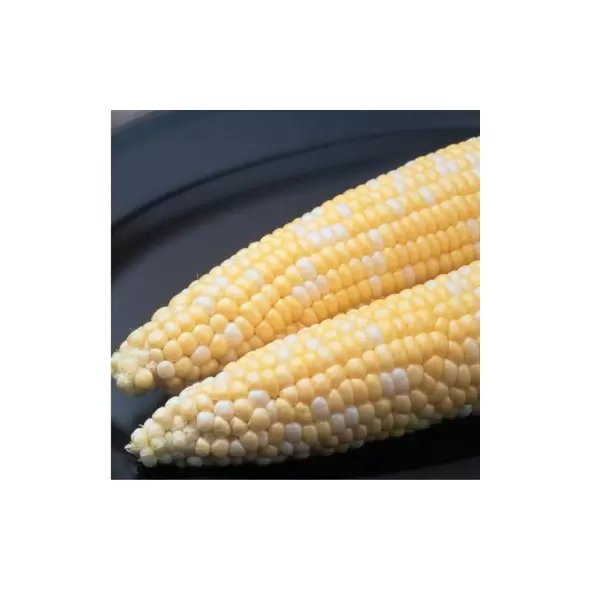Reviews
No reviews found
Description
The Unique Appeal of Ambrosia Corn
Its rich flavor and tender texture set Ambrosia Corn apart from other varieties. This hybrid combines the best characteristics of traditional corn varieties, offering a smooth, creamy bite that is sweeter than most other types of corn. The attractive bicolor appearance of the kernels—white and yellow scattered across the cob—adds a touch of beauty, making this corn as visually appealing as it is delicious.
Ambrosia is ideal for those who appreciate fresh corn on the cob. Its superior taste and texture make it popular for barbecues, picnics, and family meals. Ambrosia corn is sure to please, whether slathered with butter and sprinkled with salt or boiled to bring out its natural sweetness.
Planting and Growing Instructions
To achieve the best results, Corn, Ambrosia requires some care and attention during planting and growing. Corn thrives in a sunny location, so selecting an area of your garden that receives plenty of direct sunlight is essential. Begin planting after the last frost to ensure the soil has warmed up sufficiently, and prepare the ground by fertilizing with a high-quality vegetable fertilizer.
For optimal pollination, Ambrosia corn must be planted in blocks of at least four rows side by side rather than one long row. This helps ensure that pollen is evenly distributed across the plants, resulting in a higher yield of whole, healthy ears of corn. Consider planting new seeds every three weeks until early summer to extend your harvest. This succession planting method ensures fresh corn throughout the growing season.
Regular cultivation or mulching is necessary to keep weeds under control. When the plants reach 12-18 inches (30-46 cm) in height, they should be fertilized again. This second fertilizer application helps promote strong growth and ensures the plants receive the nutrients they need to develop fully.
Harvesting Ambrosia Corn
Knowing when and how to harvest Ambrosia corn is essential to enjoying its maximum flavor and sweetness. The best time to pick the ears is when the silks at the top of the corn begin to turn brown, and the ears feel firm to the touch. A simple test to check ripeness is to pierce a few kernels with your thumbnail. If the skin is tender and the juice appears "milky," the corn is ready to be harvested.
For the best possible taste, it is recommended that you cook and eat the corn the same day you pick it. Freshly harvested corn retains sweetness and creaminess, making it perfect for immediate enjoyment.
Tips for Cooking and Serving
To preserve the natural flavor of Ambrosia Corn, it's best to cook it as soon as possible after harvesting. Whether you prefer boiling, grilling, or steaming, the key is to avoid overcooking, which can cause the kernels to lose their tender texture and sweet taste.
When serving, the corn is delicious with just a touch of butter and salt, but it also pairs well with more adventurous flavors like herb-infused butter, cheese, or spicy seasonings. Whether served as a side dish or a main attraction at summer gatherings, Ambrosia corn is guaranteed to be a hit.
Final Words
For gardeners looking to grow a flavorful, sweet, and creamy variety of corn, Corn, Ambrosia 25# is a top choice. This hybrid corn offers exceptional taste, making it a favorite for corn on the cob, and its bicolor kernels add visual appeal to any meal. When planting, follow the recommended guidelines for optimal pollination and fertilization, and enjoy a long harvest season by planting in succession every three weeks.
Harvest when the kernels are fully developed, and the juice is milky to get the best flavor from your Ambrosia corn. Cook and eat the same day for the freshest, most delicious corn experience. Whether growing for your family or sharing with friends, Ambrosia corn is a delightful addition to any garden.











